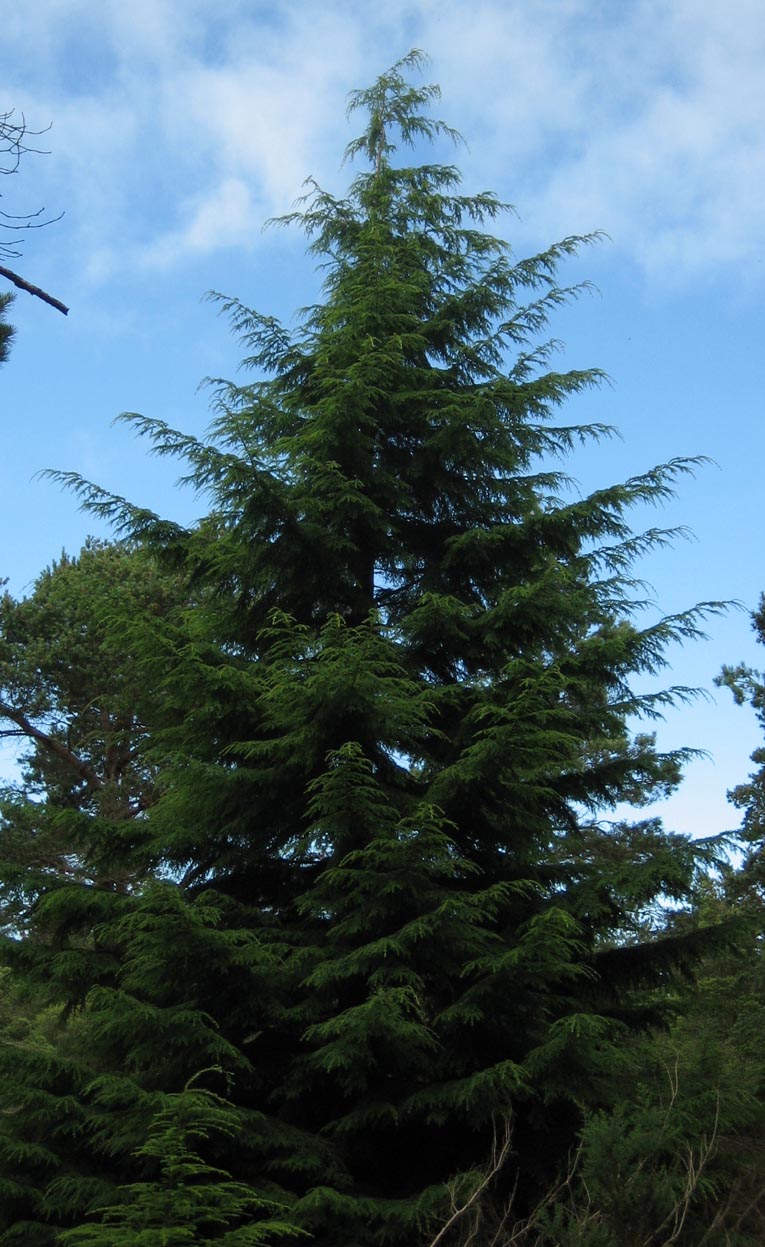Hemlock tree
(Tsuga)

Description
Tsuga, the name of Tsuga sieboldii) is a genus of conifers in the subfamily Abietoideae of Pinaceae, the pine family. The common name hemlock is derived from a perceived similarity in the smell of its crushed foliage to that of the unrelated plant poison hemlock. Unlike the latter, Tsuga species are not poisonous. Eight to ten species are within the genus (depending on the authority), with four species occurring in North America and four to six in eastern Asia. They are medium-sized to large evergreen trees, ranging from 10–60 m (33–197 ft) tall, with a conical to irregular crown, the latter occurring especially in some of the Asian species. The leading shoots generally droop. The bark is scaly and commonly deeply furrowed, with the colour ranging from grey to brown. The branches stem horizontally from the trunk and are usually arranged in flattened sprays that bend downward towards their tips. Short spur shoots, which are present in many gymnosperms, are weakly to moderately developed. The young twigs, as well as the distal portions of stem, are flexible and often pendent. The stems are rough due to pulvini that persist after the leaves fall. The winter buds are ovoid or globose, usually rounded at the apex and not resinous. The leaves are flattened to slightly angular and range from 5–35 mm (0.20–1.38 inches) long and 1–3 mm (0.039–0.118 inches) broad. They are borne singly and are arranged spirally on the stem; the leaf bases are twisted so the leaves lie flat either side of the stem or more rarely radially. Towards the base, the leaves narrow abruptly to a petiole set on a forward-angled pulvinus. The petiole is twisted at the base so it is almost parallel with the stem. The leaf apex is either notched, rounded, or acute. The undersides have two white stomatal bands (in T. mertensiana they are inconspicuous) separated by an elevated midvein. The upper surface of the leaves lack stomata, except in T. mertensiana. They have one resin canal that is present beneath the single vascular bundle. The pollen cones grow solitary from lateral buds. They are 3–5 mm (0.12–0.20 inches) (usually up to 5 mm or 0.20 inches)long, ovoid, globose, or ellipsoid, and yellowish-white to pale purple, and borne on a short peduncle. The pollen itself has a saccate, ring-like structure at its distal pole, and rarely this structure can be more or less doubly saccate.
Taxonomic tree:







